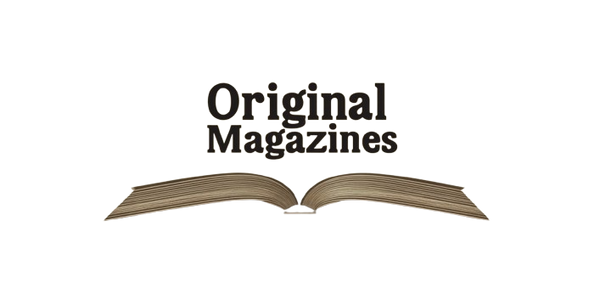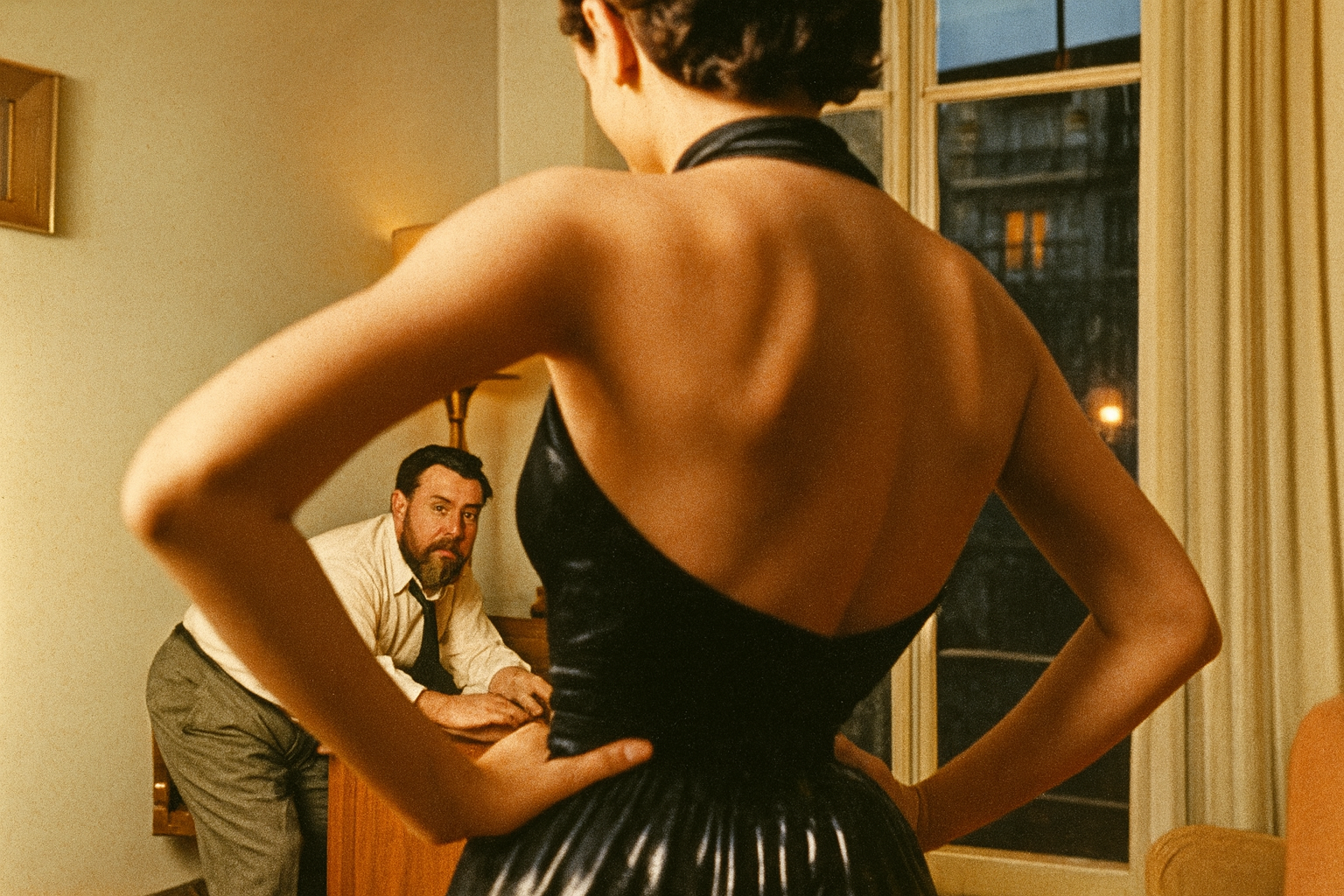Paris Fashion Rivalry, Vogue vs. Harper’s Bazaar, and the Business of Style in 1937
When Americans picked up the September 6, 1937 issue of Life Magazine, they held more than just a weekly photojournal in their hands. They were staring into the backstage world of an industry that shaped culture itself. This particular issue carried a remarkable photo-essay titled “Reporting Paris Styles is a Business” — an extraordinary blend of words and images that revealed how Vogue and Harper’s Bazaar, the two giants of fashion publishing, battled to cover the Paris “Openings.”
For readers in the United States, this was more than a fashion story. It was a revelation of how decisions made in Paris ateliers rippled into American department stores, and how editors, artists, and photographers worked feverishly to define what women would wear in the coming season. It was also a reminder that fashion was not only glamour but commerce, with rival magazines racing to be first and most authoritative.
The autumn of 1937 sat at a cultural crossroads. Europe was tense, with fascism rising in Germany and Italy and conflict spreading in Asia, yet Paris still reigned as the undisputed capital of fashion. For Americans, Paris fashion reports were not distant curiosities but powerful signals that influenced the marketplace at home.
Four times a year, Paris couturiers unveiled their seasonal “Openings,” and the August showings were the most influential of all. These events were exclusive, expensive, and tightly controlled, attended by buyers, stylists, and fashion reporters from across the Western world. What was shown on those runways in Paris would determine what filled store racks in New York, Chicago, and beyond.
In this atmosphere, the rivalry between Vogue and Harper’s Bazaar mattered deeply. Vogue, under the formidable Edna Woolman Chase, commanded vast international editions and enormous circulation. Harper’s Bazaar, led by Carmel Snow, fought to carve out its own territory by publishing daring photography and bold layouts. Both magazines rushed their staffs to Paris, both scrambled to publish coverage faster than the other, and both wielded enormous influence over what women wore in America.
It was against this backdrop of economic power, cultural taste, and international rivalry that Life Magazine brought American readers behind the scenes of fashion reporting.
By 1937, Life had established itself as America’s premier photojournalism magazine. Its editors believed that photography could show the world in ways words alone could not. Whether it was politics, war, or culture, Life delivered immediacy.
The September 6 issue proved this with its coverage of the Paris Openings. Instead of showing only finished gowns or models on the runway, Life turned its cameras on the process itself: editors poring over sketches, photographers like Horst and Baron Hoyningen-Huene working under pressure, and artists racing to capture styles before the ink had dried.
For readers at home, this was electrifying. Fashion was often seen as elite and distant, but Life presented it as industry — with deadlines, rivalries, and business pressures that were relatable to anyone who had ever worked against the clock. Turning the pages, Americans saw not just dresses but the machinery of culture in motion.
The cover of the September 6, 1937 issue featured Harpo Marx at a party — a playful reminder of Life’s range, from comedy to couture. But inside, the Paris fashion feature set a new standard for cultural reporting.
The photographs told the entire story:
-
Editors at Vogue and Harper’s Bazaar huddled around sketches of the Paris shows.
-
Models changing outfits between sittings.
-
Illustrators like Carl Erickson and Christian Bérard sketching dresses at furious speed.
-
Jean Cocteau contributing his artistic genius to Harper’s Bazaar.
-
Photographers capturing “sex-appeal” gowns in both staged and candid moments.
-
Editorial teams in New York and Paris working through the night to meet deadlines.
What made this remarkable was that the photos were not background—they were the narrative itself. Readers could see that glamour was only the end product of exhausting, creative, and competitive labor. Unlike the polished spreads of fashion magazines, Life showed the sweat and urgency behind the shine.
- The Frenzy of the Openings – Life revealed how buyers, editors, and stylists descended on Paris every August. Attendance was restricted, purchases required, and the atmosphere urgent.
- Vogue vs. Harper’s Bazaar – The essay emphasized the rivalry between the two magazines, with Vogue commanding greater resources but Harper’s Bazaar pushing bold innovation.
- Behind the Scenes – Readers saw Edna Woolman Chase guiding Vogue’s staff, while Carmel Snow orchestrated Harper’s Bazaar’s coverage from Paris.
- The Role of Illustrators – Artists such as Carl Erickson and Christian Bérard worked quickly to translate couture into sketches that could be mailed overseas long before photography arrived.
- Star Photographers – Baron Hoyningen-Huene and Horst, working under pressure, captured unforgettable images that defined the glamour of the season.
- Jean Cocteau and Cultural Crossover – The French poet and artist contributed drawings, blending high art with fashion journalism.
- Copy and Captions – Writers and editors like Marcel McGuane and Lydia Sherwood turned rough material into polished copy for American audiences.
- Models and Gowns – The photographs highlighted both the elegance of the designs and the exhausting schedules of the models who wore them.
- Business Before Glamour – Above all, the article stressed that fashion reporting was commerce at its core, shaping what millions of American women would wear.
Together, these elements revealed fashion journalism as both artistry and industry — driven by rivalry, speed, and global communication.
For collectors of vintage magazines, the September 6, 1937 issue of Life is far more than old paper. It is an artifact of both media history and fashion history.
Historical Timing
This issue captures the final pre-war years when Paris was still unchallenged as the global fashion capital. Within two years, Europe would be at war, and fashion reporting would change forever.
Behind-the-Scenes Access
Few publications of the time documented the backstage world of fashion journalism. This makes the issue invaluable for historians of media and style.
Cultural Figures
Figures like Edna Woolman Chase, Carmel Snow, Horst, Jean Cocteau, and Carl Erickson appear in these pages — giants of both art and fashion.
Collector Demand
Life magazines from the 1930s are scarce, and issues covering milestone industries like fashion are particularly sought after. Collectors value this issue for its cultural and historical significance.
Owning this issue is holding a piece of fashion’s golden age, when Vogue and Harper’s Bazaar fought for dominance and Paris dictated style to the world.
Life’s photo-essays endure because they are more than reporting. They are cultural time capsules. This issue carries the urgency, artistry, and competitiveness of 1937. In a world without instant digital media, Life was the bridge between Paris runways and American homes.
Today, these magazines remind us that what may seem ephemeral — a dress, a season, a headline rivalry — can carry enormous historical meaning. They remind us that culture itself is shaped in offices, studios, and deadlines, not just on glamorous stages.
If you’re looking to explore this issue or others like it, thousands of original Life magazines are available in our collection. From the 1930s through the 1970s, Life documented the events, people, and cultures that shaped the 20th century.
👉 Browse the full collection of original Life magazines here:
Original Life Magazines Collection
Whether you’re a seasoned collector, a fashion historian, or someone honoring the memory of a family member who lived through the era, these magazines offer something truly special: the chance to see history as it was first reported.
The September 6, 1937 issue of Life Magazine, with its feature “Reporting Paris Styles is a Business,” stands as one of the most fascinating cultural documents of its time. It revealed fashion not as simple glamour, but as serious business — powered by rivalry, artistry, and speed.
For readers in 1937, it was a revelation. For collectors today, it is a treasure. And for all of us, it is a reminder of how Life transformed journalism by showing us not just what happened, but how it happened.
Holding this issue is holding a moment when Paris ruled fashion, when Vogue and Harper’s Bazaar clashed for supremacy, and when Life captured it all with unmatched clarity.
For anyone who values history, vintage magazines like this are not simply reading material — they are living artifacts. And through them, the past speaks directly to us.

